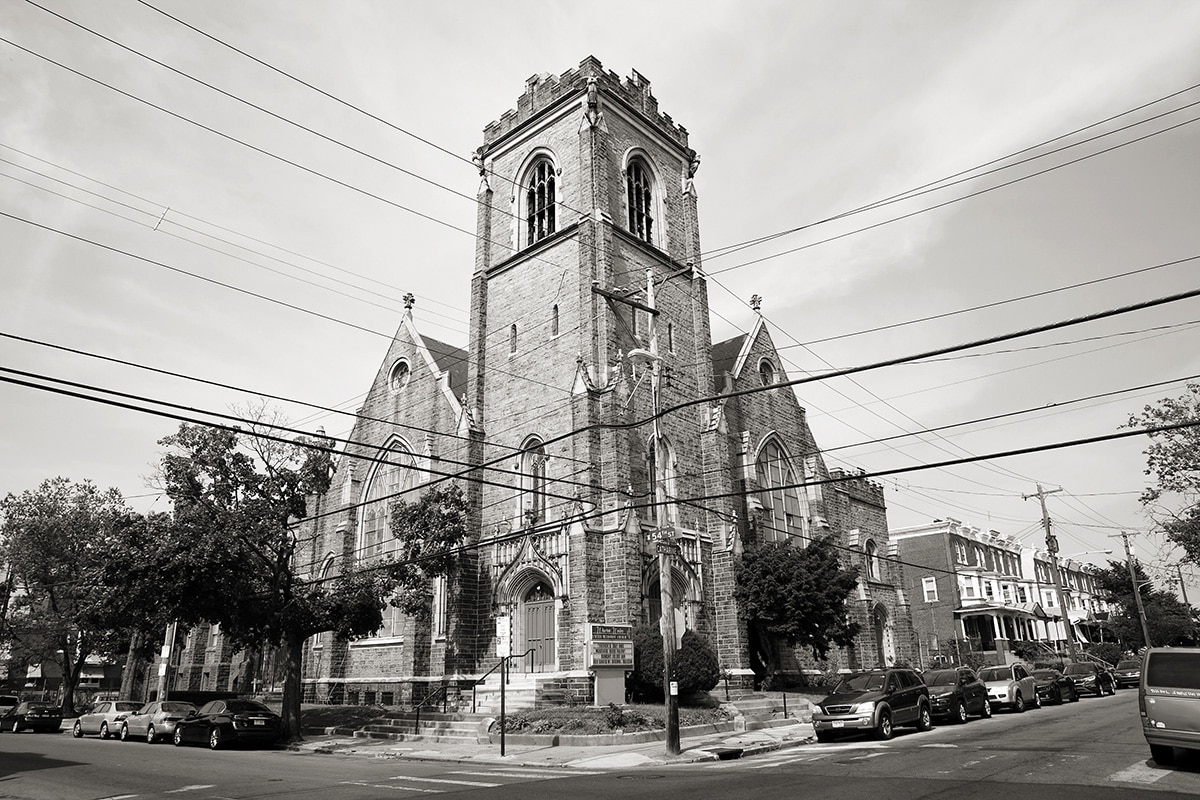
Faith and Form, Volume 51, Issue 3 :: Rachel Hildebrandt | Photographs by Chris Kendig
Philadelphia’s religious building stock is in transition, due in large part to the declining memberships and resources of many congregations, which echoes the situation in cities and towns across the country. The moment a building is sold by a congregation or its denominational office, a new user will likely decide its long-term fate. The numbers confirm this. Of the city’s 839 purpose-built religious properties, 17 percent are no longer in religious use. Half are no longer occupied by the original congregation. Since 2009, nearly 35 religious buildings have been demolished.
Many of the mainline Protestant congregations that have not yet left the city’s less affluent neighborhoods or transitioned their buildings to congregations of other denominations are likely to do so in the next decade. There is great opportunity to initiate new congregations or new community-serving programs at these sites, but most denominational bodies lack the capacity to invest in creative, new alternatives.
Meanwhile, “hermit crab congregations,” which took on properties built by congregations of other denominations (typically Protestant or Roman Catholic), are struggling to sufficiently care for their buildings—many of which suffered from deferred maintenance under their original owners. Instead of attempting to restore their buildings with scarce reserves, these congregations are de-accessioning them. This trend is especially apparent among Roman Catholic-built complexes that were de-accessioned by the Archdiocese of Philadelphia in the early 1990s. Catholic churches in North Philadelphia and West Philadelphia were closed and subsequently sold to independent, mostly African American congregations or aspirational nonprofit organizations. Nearly three decades later, many of these buildings are coming onto the market for a second time. Read more…
